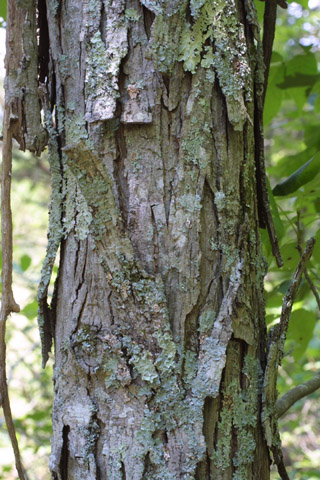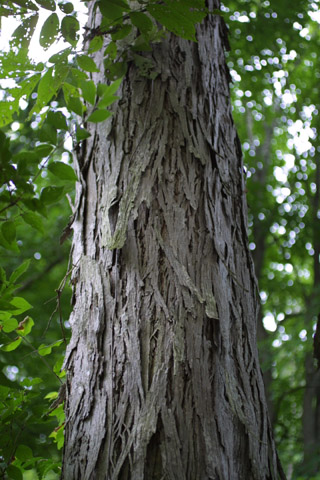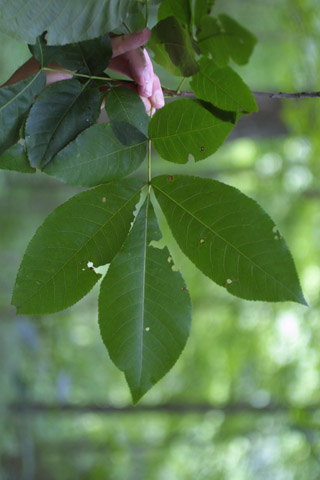Three species of Carya found in the southeastern U.S. appear to be
similar in that they have shaggy bark. However, their habitat and other
characteristics are different.
C. carolinae-septentrionalis is a
southern species and a calciphile (typically found in areas where
limestone predominates). It is commonly seen in the vicinity of cedar
glades.
C. ovata
is a wide-ranging species that is often found on
dry ridgetops.
C. laciniosa is usually found in the rich, moist
soils of bottomlands.

The twigs, buds, and fruits of the three species vary in size.
C. carolinae-septentrionalis
twigs (top) are slender and have tiny buds.
C. laciniosa
twigs (bottom) are very thick with large buds.
C. ovata twigs and buds (middle) are intermediate in size.

The fruits and nuts increase in size in the same order as the twigs.
C. carolinae-septentrionalis
(top),
C. ovata (middle),
C. laciniosa
(bottom).









